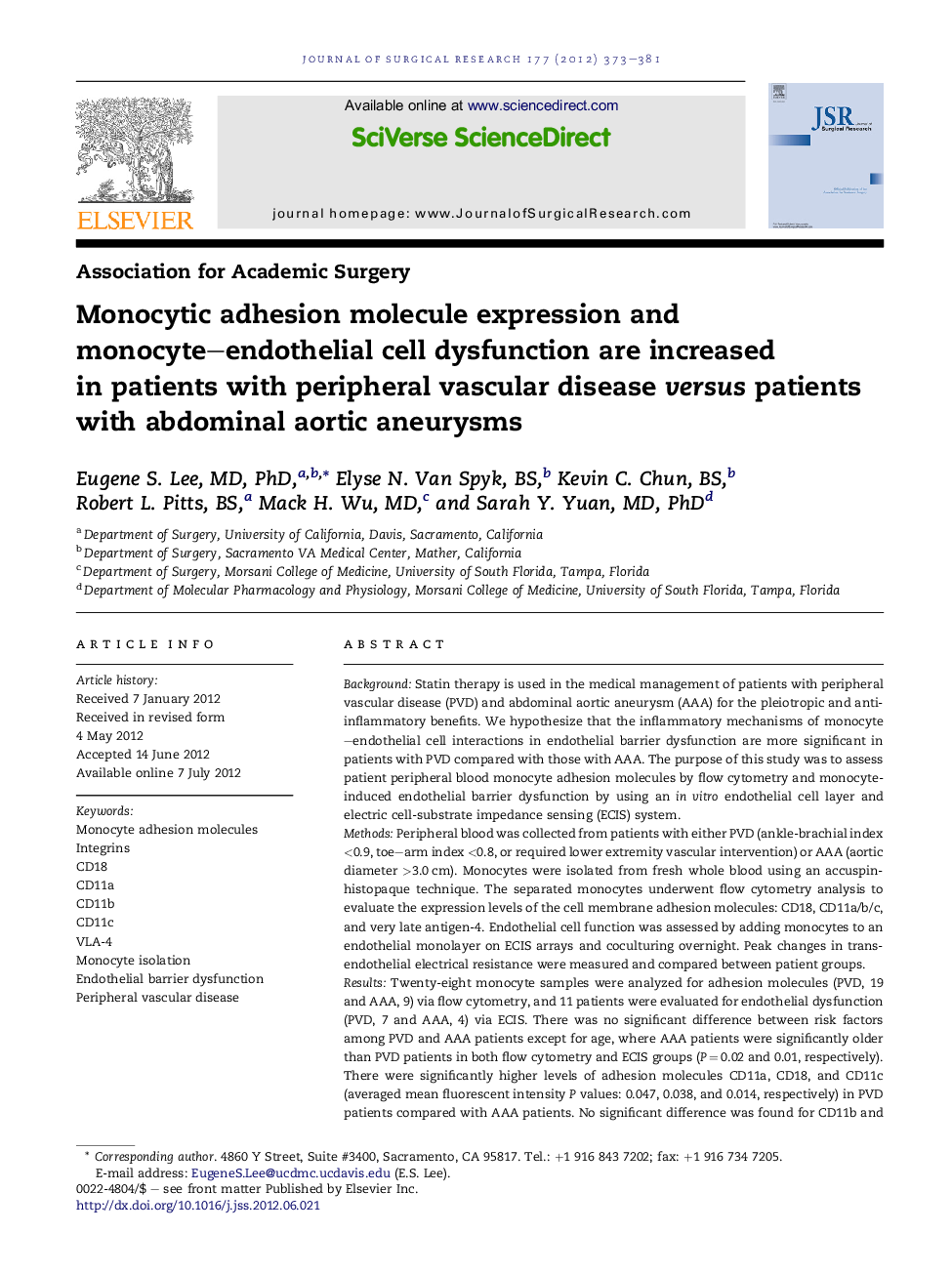| Article ID | Journal | Published Year | Pages | File Type |
|---|---|---|---|---|
| 4301236 | Journal of Surgical Research | 2012 | 9 Pages |
BackgroundStatin therapy is used in the medical management of patients with peripheral vascular disease (PVD) and abdominal aortic aneurysm (AAA) for the pleiotropic and anti-inflammatory benefits. We hypothesize that the inflammatory mechanisms of monocyte–endothelial cell interactions in endothelial barrier dysfunction are more significant in patients with PVD compared with those with AAA. The purpose of this study was to assess patient peripheral blood monocyte adhesion molecules by flow cytometry and monocyte-induced endothelial barrier dysfunction by using an in vitro endothelial cell layer and electric cell-substrate impedance sensing (ECIS) system.MethodsPeripheral blood was collected from patients with either PVD (ankle-brachial index <0.9, toe–arm index <0.8, or required lower extremity vascular intervention) or AAA (aortic diameter >3.0 cm). Monocytes were isolated from fresh whole blood using an accuspin-histopaque technique. The separated monocytes underwent flow cytometry analysis to evaluate the expression levels of the cell membrane adhesion molecules: CD18, CD11a/b/c, and very late antigen-4. Endothelial cell function was assessed by adding monocytes to an endothelial monolayer on ECIS arrays and coculturing overnight. Peak changes in transendothelial electrical resistance were measured and compared between patient groups.ResultsTwenty-eight monocyte samples were analyzed for adhesion molecules (PVD, 19 and AAA, 9) via flow cytometry, and 11 patients were evaluated for endothelial dysfunction (PVD, 7 and AAA, 4) via ECIS. There was no significant difference between risk factors among PVD and AAA patients except for age, where AAA patients were significantly older than PVD patients in both flow cytometry and ECIS groups (P = 0.02 and 0.01, respectively). There were significantly higher levels of adhesion molecules CD11a, CD18, and CD11c (averaged mean fluorescent intensity P values: 0.047, 0.038, and 0.014, respectively) in PVD patients compared with AAA patients. No significant difference was found for CD11b and very late antigen-4 expression (P = 0.21 and 0.15, respectively). There was significantly more monocyte–endothelial cell dysfunction in patients with PVD versus patients with AAA, with a maximal effect seen at 15 h after monocyte addition (P = 0.032).ConclusionsPatients with PVD have increased expression levels of certain monocyte adhesion molecules and greater monocyte-induced endothelial layer dysfunction compared with those with AAA. This may lead to other methods of targeted therapy to improve outcomes of these vascular patients.
